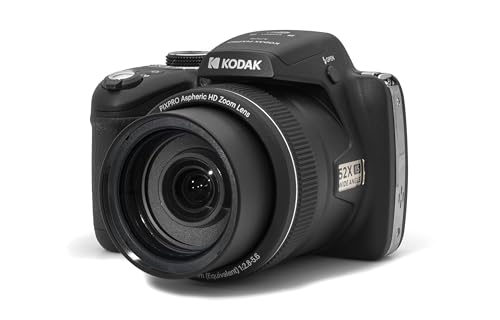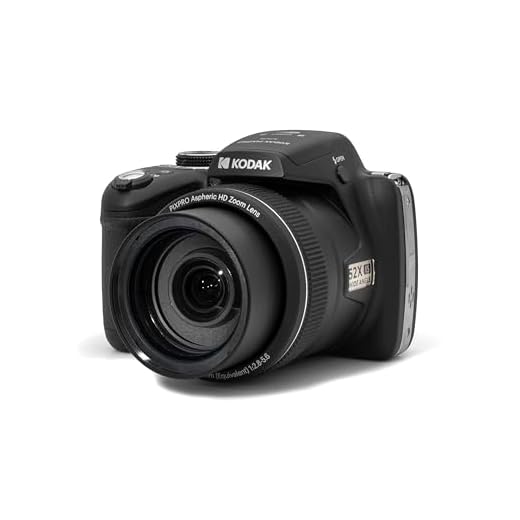




In the age of digital photography, the digital still camera has become an essential tool for capturing moments and memories with ease and precision. This device has revolutionized the way we take photos, allowing us to snap, store, and share images in a matter of seconds.
One of the key features of a digital still camera is its ability to capture high-quality images in various lighting conditions. With advanced sensors and lenses, these cameras can produce sharp and detailed photos even in low light settings, ensuring that every moment is captured beautifully.
Additionally, digital still cameras offer a range of functions and settings that allow photographers to customize their shots according to their preferences. From adjusting exposure and white balance to applying filters and effects, these cameras provide endless creative possibilities for capturing stunning images.
A Digital Still Camera Function
A digital still camera function allows users to capture high-quality images using electronic sensors instead of photographic film. The digital camera processes the captured image data and stores it in digital format, making it easy to transfer and share the images electronically. Here are some key features of a digital still camera function:
- High-resolution image capture: Digital cameras can capture images with high resolution, allowing for sharp and detailed photos.
- Image storage: Images captured by a digital camera are stored in digital format on memory cards or internal storage, making it convenient to manage and organize photos.
- Instant preview: Digital cameras often have a LCD screen that allows users to preview the captured image immediately after taking a photo.
- Image editing: Many digital cameras come with built-in editing features that allow users to enhance or manipulate images directly on the camera.
- Sharing capabilities: Digital images can be easily shared via email, social media, or printed using digital photo printers.
Overall, a digital still camera function offers convenience, flexibility, and versatility in capturing and managing images compared to traditional film cameras.
Understanding the Basics
Before delving into the digital still camera function, it is essential to understand the basics of how a camera works. A digital camera captures images using an image sensor, which converts light into electrical signals. These signals are then processed by the camera’s processor to create a digital image. Understanding the key components of a digital camera, such as the lens, sensor, and processor, will help you make the most of the camera function and produce high-quality images.
Importance of Megapixels
Megapixels play a crucial role in determining the quality of the images captured by a digital still camera. The number of megapixels directly affects the resolution of the image, with higher megapixels resulting in sharper and more detailed photos. A higher megapixel count allows for larger prints without losing image quality and provides more flexibility for cropping and editing photos.
When choosing a digital camera, the number of megapixels should be a key consideration based on your photography needs. For professional photographers or those who want to print large images, a camera with a higher megapixel count is essential. However, for everyday use or social media sharing, a camera with a moderate megapixel count may suffice.
It’s important to note that the quality of the lens, sensor size, and other factors also contribute to image quality, so the megapixel count is just one aspect to consider when selecting a digital still camera.
Choosing the Right Lens
When selecting a lens for your digital still camera, it’s important to consider the type of photography you’ll be doing. Different lenses are suited for different purposes, so choosing the right one can make a big difference in the quality of your images.
Prime Lenses
Prime lenses have a fixed focal length, which means they don’t zoom in or out. They are known for their sharpness and wide apertures, making them ideal for portrait photography and low-light situations.
Zoom Lenses
Zoom lenses, on the other hand, have a variable focal length, allowing you to zoom in and out to frame your shot. They are versatile and convenient for capturing a variety of subjects, from landscapes to sports events.
Exploring Sensor Types
When it comes to digital still cameras, the type of sensor plays a crucial role in determining the quality of the images captured. There are primarily two types of sensors used in digital cameras: CCD (charge-coupled device) and CMOS (complementary metal-oxide-semiconductor).
CCD Sensors
CCD sensors have been traditionally used in digital cameras and offer high-quality images with low noise levels. They are known for their excellent color accuracy and sensitivity in low-light conditions. However, CCD sensors tend to consume more power compared to CMOS sensors.
CMOS Sensors
CMOS sensors have gained popularity in recent years due to their lower power consumption and faster readout speeds. While they may not offer the same level of image quality as CCD sensors, CMOS sensors are more cost-effective and versatile, making them a popular choice for many digital camera manufacturers.
Mastering Exposure Settings
Understanding exposure settings is crucial for capturing high-quality photographs with your digital still camera. Exposure settings determine how much light enters the camera and ultimately affects the brightness and darkness of your images.
1. Aperture
Aperture refers to the size of the opening in the lens through which light passes. A larger aperture (smaller f-number) allows more light to enter the camera, resulting in a brighter image. Conversely, a smaller aperture (larger f-number) lets in less light, producing a darker image.
2. Shutter Speed
Shutter speed controls the amount of time the camera’s shutter remains open to expose the image sensor to light. A faster shutter speed freezes motion but lets in less light, while a slower shutter speed captures motion blur but allows more light to enter the camera.
Utilizing White Balance
White balance is a crucial aspect of photography that determines how colors appear in your images. It ensures that whites appear white and other colors are accurately represented. When using a digital still camera function, understanding and utilizing white balance settings can significantly improve the quality of your photos.
Types of White Balance Settings
Most digital cameras offer several white balance presets, such as daylight, cloudy, shade, tungsten, fluorescent, and flash. These presets adjust the color temperature of the image to compensate for different lighting conditions.
Custom White Balance
In addition to presets, many cameras allow you to set a custom white balance. This involves taking a reference photo of a white or neutral gray object under the same lighting conditions as your subject. The camera uses this reference to adjust the white balance for accurate color reproduction.
| White Balance Setting | Best Used In |
|---|---|
| Daylight | Outdoor scenes in sunlight |
| Fluorescent | Indoor scenes under fluorescent lighting |
| Tungsten | Indoor scenes under tungsten lighting |
| Flash | Using camera flash |
Enhancing Images with Filters
One of the key features of a digital still camera is the ability to enhance images using various filters. Filters can help improve the overall quality of an image by adjusting factors such as brightness, contrast, color saturation, and sharpness. By applying filters, you can make your photos look more vibrant and professional.
There are a variety of filters available on most digital cameras, including black and white, sepia, vintage, and color pop. Each filter has a unique effect on the image, allowing you to experiment and find the best style for your photos. Some cameras also offer customizable filters, allowing you to adjust the settings to achieve the desired look.
Using filters is a great way to add creativity and personality to your photos. Whether you’re looking to create a classic black and white image or a vibrant color pop photo, filters can help you achieve the desired result. Experimenting with different filters can help you develop your own unique style and enhance your photography skills.
The Role of ISO in Photography
ISO in photography refers to the sensitivity of the camera sensor to light. A higher ISO setting makes the sensor more sensitive to light, allowing you to shoot in low light conditions or capture fast-moving subjects without blur. However, increasing the ISO also introduces digital noise, which can degrade the quality of the image. It’s important to find the right balance between ISO, aperture, and shutter speed to achieve the desired exposure and image quality. Experimenting with different ISO settings can help you understand how it affects your photos and improve your photography skills.
Capturing RAW vs. JPEG
When using a digital still camera function, one important decision to make is whether to capture images in RAW or JPEG format.
RAW format: RAW files contain unprocessed data straight from the camera’s sensor, allowing for maximum flexibility in post-processing. RAW files preserve more details and offer better image quality compared to JPEG files. However, RAW files are larger in size and require special software to edit.
Pros of RAW:
- Higher image quality
- Greater flexibility in editing
- Preservation of more details
JPEG format: JPEG files are compressed and processed by the camera, resulting in smaller file sizes and immediate usability without extensive editing. While JPEG files may lose some image quality due to compression, they are convenient for quick sharing and printing.
Pros of JPEG:
- Smaller file sizes
- Immediate usability
- Convenient for sharing and printing
Ultimately, the choice between RAW and JPEG depends on your photography needs and editing preferences. Consider the trade-offs between image quality and convenience when selecting the format for capturing your digital still camera images.
Advancements in Camera Technology
With the rapid advancement of technology, digital still cameras have seen significant improvements in recent years. One of the key advancements is the development of high-resolution sensors, allowing for sharper and more detailed images.
Another important innovation is the integration of image stabilization technology, which helps reduce blurriness and camera shake, resulting in clearer photos even in low-light conditions.
Furthermore, the introduction of advanced autofocus systems has made it easier to capture fast-moving subjects with precision and accuracy.
Additionally, the incorporation of Wi-Fi and Bluetooth connectivity in modern cameras enables seamless sharing of photos and videos to social media platforms and other devices.
Overall, these advancements in camera technology have revolutionized the way we capture and share moments, making photography more accessible and enjoyable for everyone.
FAQ
What are some key features of a digital still camera function?
A digital still camera function typically includes features such as image resolution settings, white balance adjustments, exposure controls, and various shooting modes like portrait, landscape, and macro. It also allows users to review and delete photos, apply filters or effects, and transfer images to a computer or other devices.
How can I improve the quality of photos taken with a digital still camera function?
To improve the quality of photos taken with a digital still camera function, you can adjust settings like ISO, aperture, and shutter speed to achieve better exposure and sharpness. You can also pay attention to lighting conditions, use a tripod for stability, and experiment with composition techniques to capture more visually appealing images.








